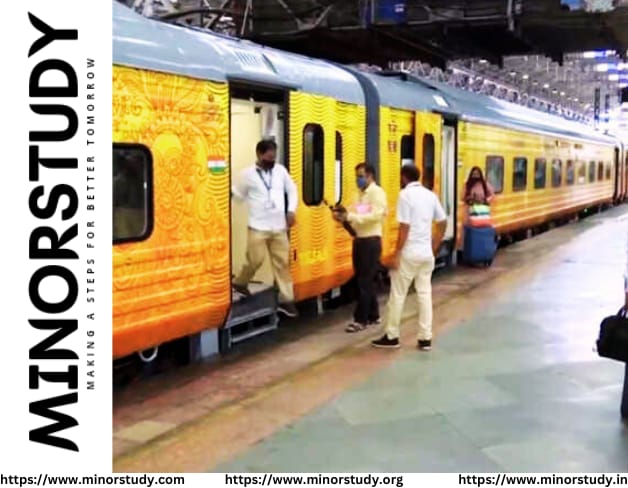🚉 9 Powerful Reasons Why Mumbai Central Railway Station Is Still a Glorious Lifeline of India
Mumbai Central Railway Station: In the heart of India’s financial capital, amidst its chaotic charm and bustling crowds, stands an architectural marvel and a symbol of endurance — the Mumbai Central Railway Station (MMCT). For millions of commuters and travelers, it’s not just a place to catch a train. It’s a starting point, a return, a goodbye, and often, a journey of hope.
- 🏛️ Introduction: What Is Mumbai Central Railway Station?
- 🕰️ Timeline: The Journey of Mumbai Central (MMCT)
- 📜 History of Mumbai Central: Where Steel Meets Soul
- 🧠 9 Fascinating Facts About Mumbai Central
- ❓ FAQs About Mumbai Central Railway Station
- Q1. What is the code of Mumbai Central station?
- Q2. Is it the same as Mumbai CST or CSMT?
- Q3. Which famous trains originate from Mumbai Central?
- Q4. Does MMCT connect to the Mumbai Metro?
- Q5. Is MMCT a heritage structure?
- 🌟 Significance of Mumbai Central Station in India
- 👪 Impact in Daily Life: A Pulse of Mumbai
- 🎉 Observance & Whishing
- ✅ Important Points in Summary
- 🧭 Relevance to Society
- 🏁 Conclusion: Mumbai Central — A Symbol of Endurance and Emotion
Let’s step into the rich legacy of Mumbai Central, tracing its history, powerful facts, FAQs, key timelines, societal significance, and its place in the daily rhythm of Indian life — all narrated with a human touch.
🏛️ Introduction: What Is Mumbai Central Railway Station?
Mumbai Central (MMCT) is one of the major railway terminals in Mumbai, located in the southern part of the city. Operated by Western Railways, it handles both long-distance intercity trains and local suburban services. It is not to be confused with Chhatrapati Shivaji Maharaj Terminus (CSMT), which serves Central Railways.
🕰️ Timeline: The Journey of Mumbai Central (MMCT)
| Year | Milestone |
|---|---|
| 1929 | Station inaugurated as “Bombay Central” |
| 1947 | Becomes a key node in post-independence rail expansion |
| 1997 | Electrification of main lines completed |
| 2005–2012 | Major modernization and remodeling |
| 2017 | Name officially changed to Mumbai Central |
| 2020–2024 | Integration with metro connectivity and SMART stations initiative |
| 2025 | Ongoing infrastructure upgrades and AI-powered control systems |
📜 History of Mumbai Central: Where Steel Meets Soul
The Mumbai Central station was opened in 1930, primarily to replace the Bombay Backbay Station and to serve as a new terminus for Western India. Designed by Claude Batley, the station’s Art Deco design with imposing stone architecture was revolutionary for its time.
Its establishment was a turning point in the Western Railway network, making Mumbai accessible to the rest of Gujarat, Rajasthan, Madhya Pradesh, and beyond.
🧠 9 Fascinating Facts About Mumbai Central
Built on Reclaimed Land
The station was constructed on land reclaimed from the sea, an engineering marvel in its day.Architectural Heritage
The structure has distinct Art Deco influences, reflecting the modernist movements of the 1920s and 30s.Birthplace of Icons
The first Rajdhani Express to Delhi started from here in 1972.Platform 1 Marvel
Platform 1 at MMCT is historically significant — used for VIP movement, filming, and inaugural trains.A Hub of Western India
Connects to Ahmedabad, Jaipur, Delhi, Surat, Bhopal, Indore, and many more.Dual Operation
Handles both long-distance trains and Mumbai suburban local trains simultaneously.Home to Duronto and Shatabdi Expresses
Most premium trains on Western Railway originate or pass through MMCT.Green Initiatives
The station features solar panels, LED lighting, and wastewater recycling units.Smart Transformation
Now equipped with digital information kiosks, escalators, free Wi-Fi, and AI-powered surveillance.
❓ FAQs About Mumbai Central Railway Station
Q1. What is the code of Mumbai Central station?
The station code is MMCT.
Q2. Is it the same as Mumbai CST or CSMT?
No. MMCT (Mumbai Central) belongs to Western Railways, while CSMT is part of Central Railways.
Q3. Which famous trains originate from Mumbai Central?
Rajdhani Express
Shatabdi Express
Duronto Express
Gujarat Mail
Karnavati Express
Q4. Does MMCT connect to the Mumbai Metro?
Yes, it is interconnected with metro stations, taxis, buses, and BEST services.
Q5. Is MMCT a heritage structure?
While not officially designated as a heritage structure, its Art Deco design is of architectural significance.
🌟 Significance of Mumbai Central Station in India
1. Economic Gateway
As Mumbai is India’s financial capital, MMCT acts as a portal for labor, business, tourism, and more.
2. Cultural Connectivity
It connects Mumbai with culturally rich states like Gujarat and Rajasthan, strengthening national unity.
3. Emergency Hub
In times of disaster (e.g., floods, COVID-19), MMCT has served as a key evacuation and logistics base.
4. Bollywood Favorite
Seen in iconic films like Dilwale Dulhania Le Jayenge, Raees, and Chalte Chalte.
👪 Impact in Daily Life: A Pulse of Mumbai
Students rely on MMCT for reaching cities like Kota, Delhi, and Pune for education.
Migrants and families use it to maintain ties with their hometowns.
Business professionals travel to Ahmedabad or Delhi for weekly meetings.
Vendors and local workers depend on suburban MMCT locals for daily commute.
MMCT is not just a station — it’s a vital organ in Mumbai’s living system.
🎉 Observance & Whishing
✨ “Wishing Mumbai Central another century of glorious service to the nation. May its platforms always remain busy with hope and dreams.”
🚉 “Here’s to the unsung heroes — stationmasters, coolies, vendors, guards — who make Mumbai Central truly central.”
🌇 “From sunrise to the last train, Mumbai Central is the heartbeat of India’s rail journey.”
✅ Important Points in Summary
| Feature | Details |
|---|---|
| Station Code | MMCT |
| Year Built | 1930 |
| Designed By | Claude Batley |
| Rail Zone | Western Railways |
| Services | Intercity + Suburban |
| Major Trains | Rajdhani, Duronto, Shatabdi |
| Architecture | Art Deco |
| Location | Southern Mumbai |
| Connectivity | Metro, Bus, Taxi, Local Train |
| Current Upgrades | AI surveillance, Wi-Fi, escalators |
🧭 Relevance to Society
✅ Enables interstate workforce migration
✅ Supports business, education, tourism, and emergency mobility
✅ Part of India’s socio-economic backbone
✅ Bridges the northwestern region with the financial epicenter
✅ Promotes urban heritage preservation
🏁 Conclusion: Mumbai Central — A Symbol of Endurance and Emotion
For almost a century, Mumbai Central has stood tall through colonial rule, independence, urbanization, and modernization. It’s more than just stone and steel; it’s memories, reunions, dreams, tears, and departures.
In a world rushing forward, MMCT remains a timeless station of human connection — fast, functional, yet deeply emotional.








